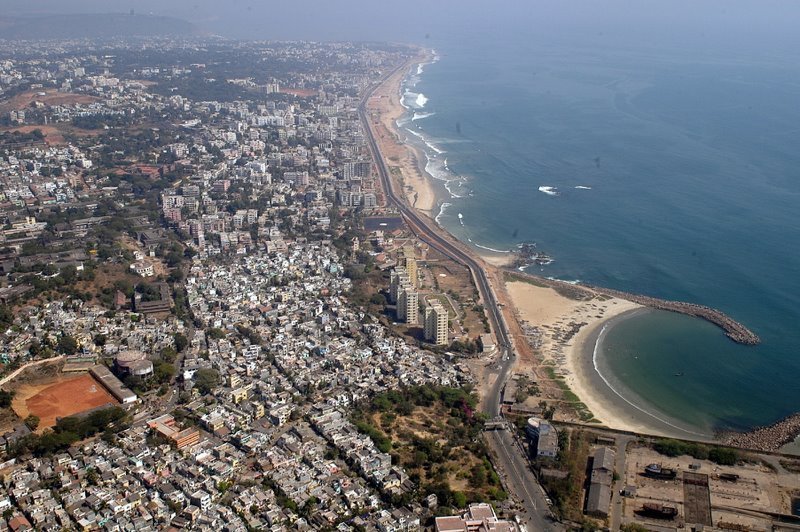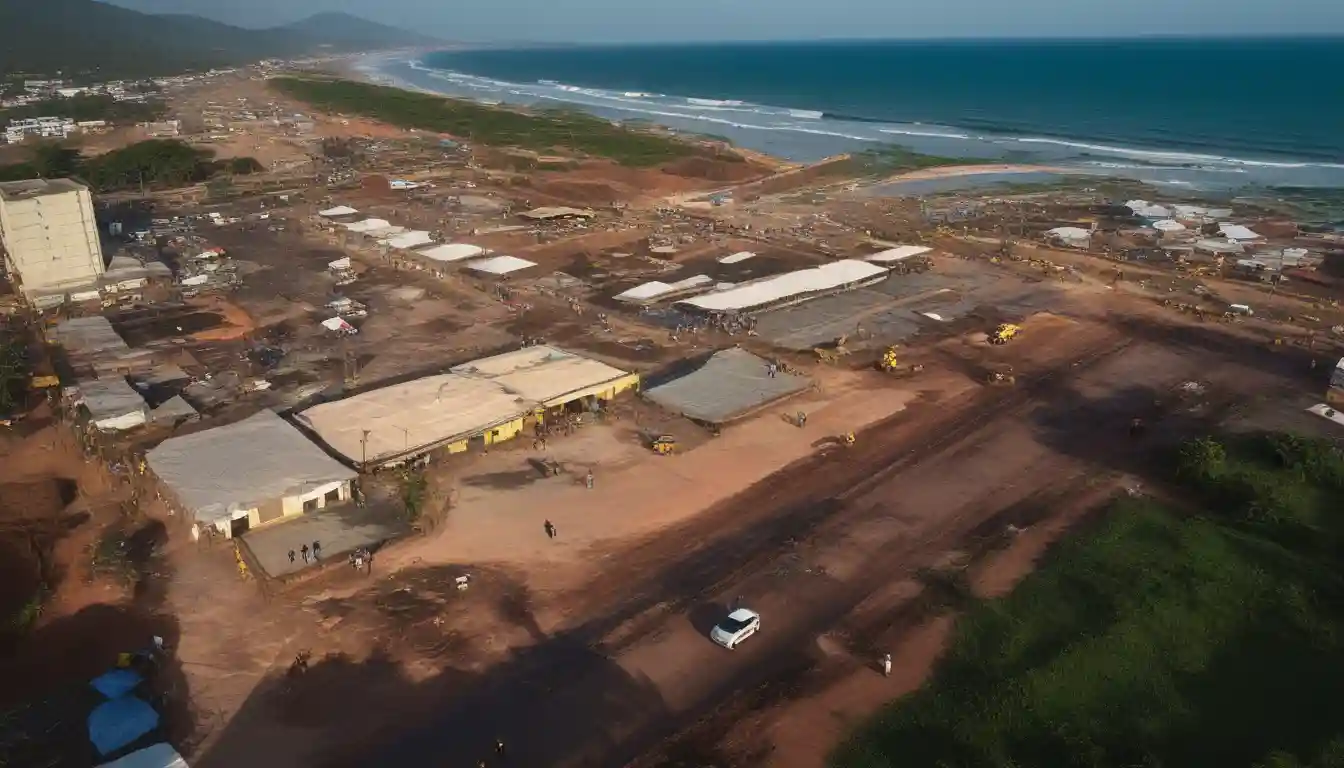Google’s $6 Billion Bet on India: A Data Center Boom or a Sustainability Gamble?
Visakhapatnam’s transformation into a digital hub raises hopes and fears as Big Tech’s hunger for power collides with India’s green energy ambitions.
VISAKHAPATNAM, India — In the bustling port city of Visakhapatnam, where fishing boats and cargo ships have long defined the horizon, a new kind of infrastructure is rising. Google’s announcement of a $6 billion investment to build a 1-gigawatt data center—its first in India—promises to catapult this coastal region into the heart of the global digital economy. Yet, as cranes loom over the 80-acre site and plans for renewable energy infrastructure take shape, questions swirl: Can India balance its ambitions as a data center powerhouse with the environmental and economic realities on the ground?
This landmark project, part of Alphabet’s broader $75 billion global commitment to expand data center capacity, is more than just a tech investment. It is a test case for India’s ability to attract foreign capital, create jobs, and meet its sustainability goals—all while navigating the complexities of a rapidly digitizing world.

A Bold Vision for Andhra Pradesh
Google’s $6 billion investment is staggering in both scale and ambition. Of the total sum, $2 billion is earmarked for renewable energy infrastructure to power the data center, underscoring the growing emphasis on sustainability in Big Tech’s expansion plans. The project, set to be Asia’s largest data center by investment value, aligns with Andhra Pradesh’s goal of adding 6 gigawatts of data center capacity within five years—a target that would require an estimated 10 gigawatts of power, much of it from green sources.
Visakhapatnam, or Vizag, is no stranger to transformation. Once a modest fishing village, it has evolved into a strategic port and industrial hub. Now, with Google’s arrival, it is poised to become a “Data City,” a moniker that reflects both the state’s aspirations and the challenges ahead. The project is expected to create thousands of jobs, from IT and construction to maintenance and skill development, offering a lifeline to a region still recovering from economic setbacks following its bifurcation in 2014.
Yet, beneath the optimism lies a stark reality: data centers are energy hogs. As one analyst put it, “The digital economy runs on electricity, and India’s grid is already stretched thin.” With data centers projected to consume up to 7.5 gigawatts of power in India by the end of the decade—up from just 1 gigawatt today—the pressure on energy infrastructure is immense.
The Power Puzzle: Green Energy or Coal Dependence?
At the heart of Google’s investment is a delicate balancing act between renewable energy and the need for reliable, round-the-clock power. While Andhra Pradesh is ramping up its green energy capacity, coal-fired plants still dominate the grid. The state’s IT minister has acknowledged that some coal power will be necessary to ensure uninterrupted operations, raising concerns among environmental advocates.
“Generative AI and hyperscale cloud have fundamentally changed the economics and urgency of data center construction,” one expert noted. “But the rush to build risks locking regions into fossil fuel dependence if renewables can’t scale fast enough.”
Google’s $2 billion commitment to renewables is a step in the right direction, but it may not be enough. The company aims to power the data center primarily through solar and wind, supplemented by battery storage. However, analysts warn that if Andhra Pradesh fails to add 3 gigawatts of new renewable capacity by 2027, coal could account for up to 30% of the energy mix—doubling the project’s carbon footprint.
The stakes are high, not just for Google but for India’s broader sustainability goals. As one observer remarked, “This is a make-or-break moment for India’s green energy transition. If Big Tech can’t go green here, where can it?”
Economic Windfall or Wishful Thinking?
For Andhra Pradesh, Google’s investment is a political and economic coup. The state’s government, led by Chief Minister Chandrababu Naidu—a key ally of Prime Minister Narendra Modi—has aggressively courted foreign investment to rebuild its economy. Incentives, regulatory support, and infrastructure upgrades have been dangled to attract marquee players like Google, and the strategy appears to be paying off.
The economic impact could be transformative. Beyond the thousands of jobs created during construction and operation, the data center is expected to spur growth in ancillary industries, from IT services to real estate. Vizag’s connectivity is also set to improve, with plans for undersea cable networks that could rival Mumbai’s capacity, positioning the city as a global digital artery.
But not everyone is convinced the benefits will trickle down. “Governments tout job growth and smart cities, but most data centers require relatively few long-term jobs post-construction,” one analyst cautioned. “The lion’s share of benefits often goes to corporations and select developers, while local communities shoulder higher power and water costs.”
Indeed, the strain on local resources is already a point of contention. Data centers are notorious for their water consumption, particularly for cooling systems, and Vizag’s water infrastructure is ill-equipped to handle the additional demand. Meanwhile, the state’s generous tax breaks for tech giants have sparked debate over whether public revenues will take a hit just as the need for social services grows.
A Global Trend with Local Consequences
Google’s investment is not an isolated event. It is part of a broader industry trend that has seen hyperscalers like Amazon Web Services, Microsoft Azure, and Meta pour billions into data centers across India and Southeast Asia. Domestic players like CtrlS and Nxtra by Airtel are also expanding rapidly, often with a focus on renewable power.
The drivers are clear: the AI and cloud computing boom, India’s data localization laws, and the country’s relatively low construction and power costs. As one industry insider put it, “India is the new frontier for data centers. The question is whether it can build the infrastructure fast enough to keep up with demand.”
Yet, the risks are equally apparent. The environmental impact of data centers—particularly their energy and water usage—has drawn scrutiny worldwide. In India, where power outages are common and water scarcity is a growing concern, the challenges are magnified. “Local communities often bear the brunt of these developments,” one expert observed, “with few of the long-term benefits.”
Looking Ahead: Investment Opportunities and Risks
For professional traders, Google’s investment offers a window into the future of India’s digital infrastructure boom. The project’s success could unlock a wave of similar developments, creating opportunities in renewable energy, power development, and real estate. However, the risks—particularly around energy supply and regulatory hurdles—cannot be ignored.
Analysts suggest several forward-looking investment angles:
- Power Development JVs: With Andhra Pradesh’s grid facing structural tightness by 2027, investments in merchant solar-plus-storage and flexible gas or coal peakers could yield outsized returns.
- Renewable Energy Asset Flips: Google’s $2 billion green energy sleeve could generate levered internal rates of return above 12%, making renewable energy projects in the region attractive for early investors.
- Land and REIT Carve-Outs: As demand for data center real estate surges, land assembly near Vizag’s cable-landing stations could offer lucrative exit opportunities through real estate investment trusts .
However, caution is warranted. Past performance in infrastructure investments does not guarantee future results, and the regulatory landscape in India can be unpredictable. Investors should consult financial advisors for personalized guidance and consider policy-risk hedges, such as minority stakes in joint ventures.
A Defining Moment for India and Big Tech
Google’s $6 billion investment in Visakhapatnam is more than just a data center—it is a bet on India’s future as a digital superpower. For Andhra Pradesh, it promises jobs, growth, and global connectivity. For Google, it is a strategic foothold in one of the world’s fastest-growing markets.
Yet, the project’s success hinges on a delicate balance. Can India scale its renewable energy capacity fast enough to power the digital revolution without falling back on coal? Will the economic benefits reach local communities, or will they be concentrated in the hands of a few? And can Big Tech’s sustainability pledges hold up under the pressures of rapid expansion?
As one analyst succinctly put it, “In India, whoever can secure reliable power, connectivity, and incentives will dominate the next digital revolution.” For now, all eyes are on Vizag—a city on the cusp of transformation, for better or worse.
Disclaimer: This article provides informed analysis based on current market data, established economic indicators, and historical patterns. All projections are speculative and should not be taken as financial advice. Past performance does not guarantee future results. Readers are encouraged to consult financial advisors for personalized guidance.
